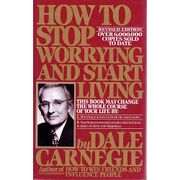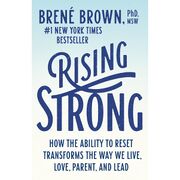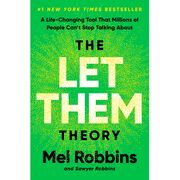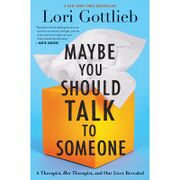Braving the Wilderness
🍎 Healthy brain food
"True belonging doesn’t require us to change who we are. It requires us to be who we are."
— Brené Brown, Braving the Wilderness (2017)
Introduction
| Braving the Wilderness | |
|---|---|
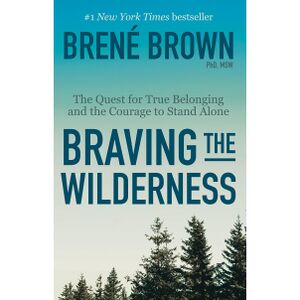 | |
| Full title | Braving the Wilderness: The Quest for True Belonging and the Courage to Stand Alone |
| Author | Brené Brown |
| Language | English |
| Subject | Belonging; Social psychology; Personal development |
| Genre | Nonfiction; Self-help |
| Publisher | Random House |
Publication date | 12 September 2017 |
| Publication place | United States |
| Media type | Print (hardcover, paperback); e-book; audiobook |
| Pages | 208 |
| ISBN | 978-0-8129-9584-8 |
| Goodreads rating | 4.1/5 (as of 6 November 2025) |
| Website | penguinrandomhouse.com |
📘 Braving the Wilderness (2017) is a nonfiction book by Brené Brown, published by Random House, that argues “true belonging” means being who you are while staying connected to others.[1] Brown blends long-running social-work research with personal storytelling and maps four practices of belonging intended for everyday use.[1] The voice is direct and pragmatic; one trade review called it “an enthusiastic, practical guide” to building connection across difference.[2] It was selected as Reese’s Book Club’s January 2018 pick.[3] The publisher lists it as a #1 New York Times bestseller, and it reached #2 on Publishers Weekly’’’s Hardcover Nonfiction list for the week of 25 September 2017.[1][4]
Chapter summary
This outline follows the Random House first-edition hardcover (12 September 2017; ISBN 978-0-8129-9584-8).[5] Publication information per publisher catalogue.[1]
🌐 1 – Everywhere and nowhere. The chapter opens with a 1973 PBS conversation between Maya Angelou and Bill Moyers, where Angelou frames freedom as the paradox of belonging everywhere and nowhere at once; the line becomes a touchstone for what follows. It traces a personal and research-based reckoning with conditional acceptance—moments when approval hinged on fitting in rather than showing up fully. It distinguishes “fitting in” from “belonging” and introduces the wilderness as a metaphorical landscape where solitude, uncertainty, and integrity meet. Contemporary polarization and the safety of ideological bunkers show how groups can promise protection while eroding self-trust and civility. The voice is direct, mixing field notes with lived vignettes to make the costs of conformity concrete. It highlights the human tendency to dehumanize out-groups and to mistake social-media proximity for connection. The chapter foreshadows the practices developed later—moving toward people, speaking truth with civility, reaching for strangers, and cultivating a strong back, soft front, wild heart. The stakes are clear: belonging may require choosing solitude over approval. Psychologically, the shift is from approval-seeking (performing to avoid shame) to identity congruence (alignment between values and behavior), which enables authentic ties and anchors the book’s thesis that belonging to oneself first makes connection across difference possible without self-betrayal.
🧭 2 – The quest for true belonging. Building on years of grounded-theory interviews at the University of Houston, this chapter consolidates a working definition of “true belonging” and outlines the quest it demands. It treats belonging as a spiritual practice rather than a destination, rooted in self-trust and the willingness to stand alone when needed. It contrasts belonging with fitting in, noting how people-pleasing, performance, and silence buy approval at the cost of integrity. To move from abstraction to practice, it introduces four behaviors that structure the rest of the book, from approaching those we disagree with to holding hands with strangers in shared spaces. Readers map where they abandon themselves—at work, at home, in faith and civic life—and identify small acts that realign behavior with values. Paradox is central: the work calls for a firm spine and an open heart, toughness and tenderness at once. The chapter also warns that polarization rewards conformity and punishes nuance, making daily rituals of self-belonging essential. As self-acceptance rises and shame loses leverage, identity-based belonging—locating safety in self-consistency rather than external validation—turns connection from transaction to choice without forfeiting values.
⛰️ 3 – High lonesome: A spiritual crisis. It opens with the “high lonesome” sound of American bluegrass, associated with Kentucky bandleader Bill Monroe, as a concrete image of a cry that names shared pain rather than private failure. Using that musical cue, the narrative reframes loneliness as a collective condition of the late 2010s, when like-minded bunkers and algorithmic echo chambers promise safety but thin out real connection. Field notes from years of interviews at the University of Houston surface a pattern: when belonging is traded for fitting in, people mute values to avoid conflict and end up more isolated. The text distinguishes solitude that restores from isolation that numbs, showing how scrolling for agreement masquerades as community. It shows how common-enemy bonding offers brief relief yet deepens estrangement once the foe disappears. In this telling, the wilderness is both the risk of being seen and the only trail back to integrity. Naming grief, anger, and fear becomes a practice, not a confession, so that hurt does not calcify into contempt. The throughline is practical: identify spaces where approval is contingent and step toward conversations that test conviction without demanding conformity. The core move is shifting allegiance from external validation to value-consistent action; replacing sorting with curiosity links honest self-possession to durable connection across differences.
🤝 4 – People are hard to hate close up. Move in. The scene narrows to everyday proximity—kitchen tables, workplace meetings, and grocery lines—where showing up in person counters the abstractions of online argument. The chapter draws a bright boundary: approach others, but never at the expense of physical safety or what participants describe as emotional safety. To define that line, it draws on philosophers Michelle Maiese (Emmanuel College, Boston) and David Livingstone Smith (University of New England), who map dehumanization as a process that starts with enemy images and slides toward moral exclusion. With that map in hand, the practice becomes concrete: zoom in on real people and stories, notice when rhetoric turns to labels, and refuse language that treats opponents as less than human. Anger is acknowledged as a clear signal; unacknowledged pain curdles into bitterness and blame, especially when fueled by punditry and performative outrage. Curiosity and boundary-setting travel together—clear limits make compassion sustainable rather than exhausting. Moments of disagreement become skill drills: ask for specifics, mirror what you heard, and check whether your judgment rests on headlines or firsthand contact. The idea is that closeness restores complexity; faces and names disrupt the caricatures required by distance. Structured contact and perspective-taking weaken stereotyping while dignity-based boundaries prevent harm, aligning true belonging with day-to-day behavior.
🗣️ 5 – Speak truth to bullshit. Be civil. The chapter anchors itself in philosopher Harry G. Frankfurt’s definition—first published in 1986 and expanded in 2005 by Princeton University Press—of bullshit as speech indifferent to truth rather than opposed to it. Building on that distinction, it offers a checklist for live conversations: notice false binaries, refuse moving goalposts, separate people from claims, and slow the pace enough to verify sources. It contrasts debates organized around facts and shared criteria with zero-sum exchanges designed to trigger loyalty tests and identity performance. A second pillar is civility, defined not as politeness or passivity but as naming one’s needs and boundaries without degrading someone else’s. Practical language—“I don’t know,” “show me the data,” “that label dehumanizes”—is framed as accountability, not weakness. Generous interpretation is paired with hard stops on ad hominem and conspiracy talk, so empathy does not become enablement. The chapter closes with a tactical rhythm: start with curiosity, surface evidence, name limits, and leave the door open for future dialogue. Allegiance to truth and dignity outranks allegiance to tribe; verification and respectful boundaries turn identity clashes into solvable information problems while preserving integrity and relationship.
🎶 6 – Hold hands. With strangers. In an overflow room of a church in a small Texas town, about 200 people in folding chairs sang “How Great Thou Art” a cappella at a friend’s father’s funeral, turning a plain space into a shared, sacred moment. That scene frames a “ministry of presence,” where showing up matters more than perfect words and where music, as neurologist Oliver Sacks observed, reaches emotion directly. Trust research repeatedly places attending funerals among behaviors that deepen trust, binding even strangers. Another vignette gathers relatives in Hondo, Texas, where stories and a guitar-backed “Ave Maria” under heat and cicadas make grief communal rather than private. The chapter also recounts Sheryl Sandberg’s Option B moment at a cemetery, where singing Oseh Shalom steadied a family in shock, showing how ritual holds pain. Across services, vigils, and concerts, these embodied moments counter the isolating pull of screens and transform solitary sorrow into mutual witness. The invitation is practical: seek collective moments of joy and pain in person, and let proximity knit trust. Shared ritual restores belief in inextricable human connection, and that belief sustains courage in the wilderness.
🦁 7 – Strong back. Soft front. Wild heart. The final chapter begins with Buddhist teacher Roshi Joan Halifax’s guidance “strong back, soft front,” contrasting a brittle, defended stance with a steadier posture that holds firm and stays open. Building on that foundation, “wild heart” names the lived tension of being tough and tender, brave and afraid, fierce and kind—often all at once. Practice turns concrete through a compact trust inventory——BRAVING—spelling out Boundaries, Reliability, Accountability, Vault, Integrity, Nonjudgment, and Generosity as everyday commitments. Concrete moves include naming what’s OK and not OK before hard conversations, owning mistakes without deflecting, and refusing gossip as a shortcut to intimacy. Repair is part of the rhythm: circle back, apologize specifically, and realign behavior with stated values. A wild heart means choosing connection without abandoning oneself and bearing discomfort without armoring up. The stance links personal life to civic life by carrying courage and compassion into families, workplaces, congregations, and streets. The underlying move is integration—backbone and openness held together—so belonging starts within and extends outward. Practicing BRAVING builds self-trust, which enables dignity-based connection and completes the book’s arc of true belonging.
Background & reception
🖋️ Author & writing. Brown is a research professor at the University of Houston who describes her work as two decades of studying courage, vulnerability, shame, and empathy.[6] The book follows earlier bestsellers such as Rising Strong, Daring Greatly, and The Gifts of Imperfection and aims to reframe belonging for a polarized moment.[1] Brown presents a mix of research and personal narrative and argues that modern disconnection requires practiced skills rather than slogans.[1] The framework is organized around four practices of true belonging that the chapters translate into daily action.[1] Reviewers noted a conversational, pragmatic register suited to general readers.[2]
📈 Commercial reception. In the week reported 20 September 2017, Publishers Weekly noted that Braving the Wilderness sold about 42,000 copies, the second highest-selling adult nonfiction title in the U.S. that week.[7] It peaked at #2 on Publishers Weekly’’’s Hardcover Nonfiction list for the week of 25 September 2017 and remained a strong chart presence through October.[4] According to the publisher, the book is a #1 New York Times bestseller.[1] It was also selected as Reese’s Book Club’s January 2018 pick, boosting visibility with mainstream readers.[3]
👍 Praise. Kirkus Reviews called the book “an enthusiastic, practical guide” to cultivating connection across difference (review posted 2 September 2017).[2] AudioFile Magazine praised Brown’s audiobook narration as authentic and well-matched to the material, highlighting the power of her performance.[8] The professional magazine The New Social Worker described the book as offering “practical stories, lessons, and tools” and spotlighted its four guiding principles of belonging (3 July 2018).[9]
👎 Criticism. Kirkus Reviews also judged that the book offers “nothing truly groundbreaking,” tempering its enthusiasm with a call for more novelty.[2] AudioFile Magazine noted that Brown’s narration “isn’t perfect or polished,” even as it found the performance effective.[8] Writing from a theological perspective, Kristen Padilla at The Gospel Coalition argued that the book’s emphasis on belonging to oneself advances an ideology of a “divine self,” a point she disputes (7 February 2018).[10]
🌍 Impact & adoption. The title was a Reese’s Book Club selection in January 2018, signaling broad popular reach beyond Brown’s core audience.[3] Around publication, Brown delivered “Braving the Wilderness” talks at major organizations—including Target (11 September 2017) and Microsoft (21 September 2017)—indicating early corporate uptake of the book’s themes.[11] The book has been assigned in university courses such as Social Work syllabi at the University of Texas at Austin (Summer 2024), showing curricular adoption.[12] Brown also discussed the book’s ideas on national television, including a CBS This Morning segment in 2017.[13]
Related content & more
YouTube videos
CapSach articles
Enjoyed this page?
📚If this page Braving the Wilderness inspired or helped you today, a small coffee helps us keep creating and sharing more. Your support truly matters.👏
References
- ↑ 1.0 1.1 1.2 1.3 1.4 1.5 1.6 1.7 "Braving the Wilderness: Reese's Book Club". Penguin Random House. Penguin Random House. Retrieved 27 October 2025.
- ↑ 2.0 2.1 2.2 2.3 "BRAVING THE WILDERNESS". Kirkus Reviews. Kirkus Media. 2 September 2017. Retrieved 27 October 2025.
- ↑ 3.0 3.1 3.2 "Braving the Wilderness: The Quest for True Belonging and the Courage to Stand Alone". Reese’s Book Club. Hello Sunshine. Retrieved 27 October 2025.
- ↑ 4.0 4.1 "Publishers Weekly Bestseller Lists — Hardcover Nonfiction". Publishers Weekly. PWxyz, LLC. 16 October 2017. Retrieved 27 October 2025.
- ↑ "Braving the wilderness: the quest for true belonging and the courage to stand alone". WorldCat. OCLC. Retrieved 27 October 2025.
- ↑ "About Brené". Brené Brown. Brené Brown. Retrieved 27 October 2025.
- ↑ Milliot, Jim (20 September 2017). "Clinton's 'What Happened' Sold 167,000 Copies in Week One". Publishers Weekly. Retrieved 27 October 2025.
- ↑ 8.0 8.1 "BRAVING THE WILDERNESS by Brené Brown, read by Brené Brown". AudioFile Magazine. AudioFile Publications. Retrieved 27 October 2025.
- ↑ "Book Review: Braving The Wilderness: The Quest for True Belonging and the Courage to Stand Alone". The New Social Worker. White Hat Communications. 3 July 2018. Retrieved 27 October 2025.
- ↑ Padilla, Kristen (7 February 2018). "Brené Brown and the Lie of the Divine Self". The Gospel Coalition. The Gospel Coalition. Retrieved 27 October 2025.
- ↑ "Brené Brown, Ph.D., MSW — Curriculum Vitae" (PDF). University of Houston. University of Houston. Retrieved 27 October 2025.
- ↑ "SW f327 Human Behavior and the Social Environment — Syllabus (Summer 2024)" (PDF). Steve Hicks School of Social Work, University of Texas at Austin. University of Texas at Austin. 6 June 2024. Retrieved 27 October 2025.
- ↑ "Author Brené Brown on why echo chambers breed loneliness". CBS News. CBS. 12 September 2017. Retrieved 27 October 2025.

